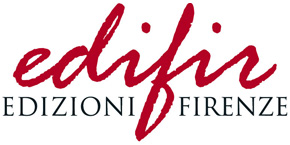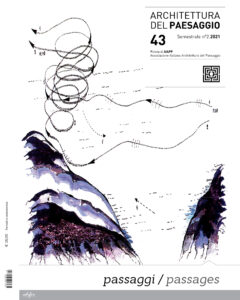
Urban Landscape in the Third Rome
Raphael's Villa and Mussolini's Forum
Volume 36,00€
Descrizione
Volume in inglese
The “Renaissance” gardens of Villa Madama, Raphael’s late masterwork for the Medici popes, were actually completely recreated in the twentieth century, although little information about them has previously emerged. Based on abundant material from private archives, this book reveals an unknown story of the gardens’ creation by an international cohort of designers and patrons. It further details how the restored villa came to be integrated into one of the most significant urban initiatives of the Fascist ventennio—the neighboring Foro Mussolini (current Foro Italico)—and linked with the seat of the Foreign Ministry in a verdant garden park. This novel account of the synergy among these coeval projects traces the interwar development of this symbolic entry zone to Rome, demonstrating the power of urban landscape for constructing political and cultural identity.
This narrative integrates the histories of architecture, of gardens and landscape, of urban form, and of restoration with the storia del gusto and political history. It also introduces the villa’s owners—a French engineer, then an Italian count and a flamboyant American heiress—interweaving stories of their lives with their restoration of this significant heritage site, set against the political backdrop of the Fascist ascendency. The richly textured narrative yields a new portrait of the villa as an international salon for soft diplomacy, and examines the mythologizing of Renaissance heritage by ideologues and propagandists establishing the Third Rome. Ultimately it is a tale of diachronic political theater in the palimpsestic gateway to Rome, at a crucial moment for the formation of Italian cultural identity and Roman urban form.
Yvonne Elet is Professor of the History of Art and Architecture at Vassar College in Poughkeepsie, New York. A specialist in the art of early modern Italy, her research focuses on integrated designs for architecture, landscape, and urban form. She has published on topics including Raphael’s intermedial oeuvre, early modern stucco, and twentieth century American landscape. Her book projects include Architectural Invention in Renaissance Rome: Artists, Humanists, and the Planning of Raphael’s Villa Madama (Cambridge University Press, 2017); and a co-edited volume of essays forthcoming from Brepols entitled Reconsidering Raphael.
_ _ _ _ _ _ _ _ _ _ _ _ _ _ _ _ _ _ _ _ _ _ _ _ _ _ _ _ _ _ _ _ _ _ _ _ _ _ _ _ _ _ _ _ _ _ _ _ _ _ _ _ _ _ _ _ _ _ _ _ _ _ _ _ _ _ _ _ _ _ _ _
I giardini “rinascimentali” di Villa Madama, ultimo capolavoro di Raffaello per i papi Medici, furono in realtà completamente ricreati nel XX secolo, anche se finora sono emerse poche informazioni su di essi. Basato su un abbondante materiale proveniente da archivi privati, questo libro rivela la storia sconosciuta della creazione dei giardini da parte di un gruppo internazionale di designer e mecenati. Viene spiegato in modo dettagliato come la villa restaurata fu integrata in una delle iniziative urbane più significative del ventennio fascista – il vicino Foro Mussolini (attuale Foro Italico) – e collegata con la sede del Ministero degli Esteri all’interno di un verdeggiante parco. Questo nuovo resoconto della sinergia tra questi progetti coevi ripercorre lo sviluppo tra le due guerre di questa simbolica zona di ingresso a Roma, dimostrando il potere del paesaggio urbano per la costruzione di un’identità politica e culturale.
Questa narrazione integra la storia dell’architettura, dei giardini e del paesaggio, della forma urbana e del restauro con la storia del gusto e la storia politica. Presenta inoltre i proprietari della villa – un ingegnere francese, poi un conte italiano e una fiammeggiante ereditiera americana – che intrecciarono le loro vite con il restauro di questo importante sito storico, avvenuto all’interno del contesto politico dell’ascesa fascista. La narrazione riccamente strutturata fornisce un nuovo ritratto della villa come salone internazionale di diplomazia mondana ed esamina la mitizzazione dell’eredità rinascimentale da parte di ideologi e propagandisti che fondarono la Terza Roma. Infine, è un racconto storico del teatro politico di Roma, in un momento cruciale per la formazione dell’identità culturale italiana e della forma urbana romana.
Yvonne Elet è professoressa di Storia dell’Arte e dell’Architettura al Vassar College di Poughkeepsie, New York. Specialista dell’arte italiana della prima età moderna, la sua ricerca si concentra sulla progettazione integrata di architettura, paesaggio e forma urbana. Ha pubblicato su diversi argomenti tra cui l’opera intermedia di Raffaello, gli stucchi della prima età moderna e il paesaggio americano del XX secolo. Fra i suoi libri ci sono Architectural Invention in Renaissance Rome: Artists, Humanists, and the Planning of Raphael’s Villa Madama (Cambridge University Press, 2017); e un volume di saggi in uscita per Brepols intitolato Reconsidering Raphael.













